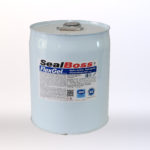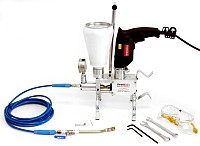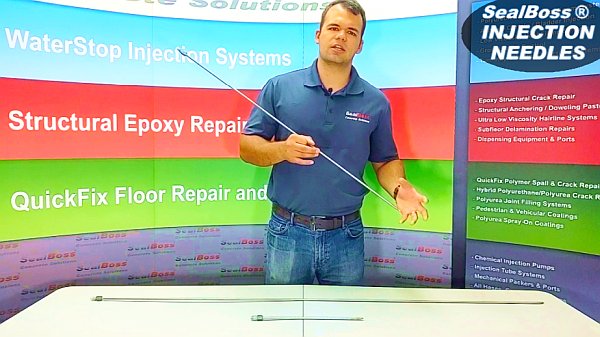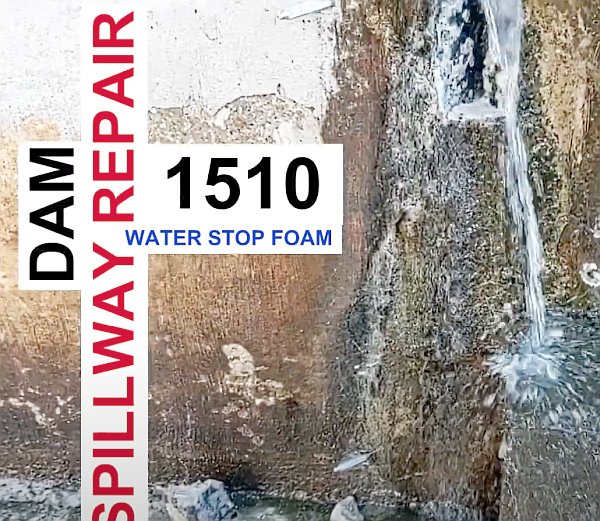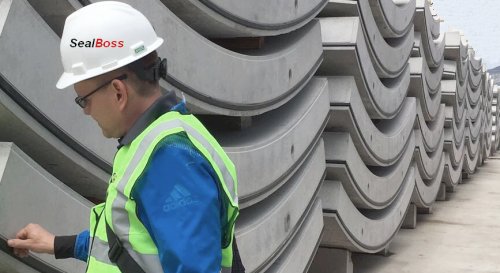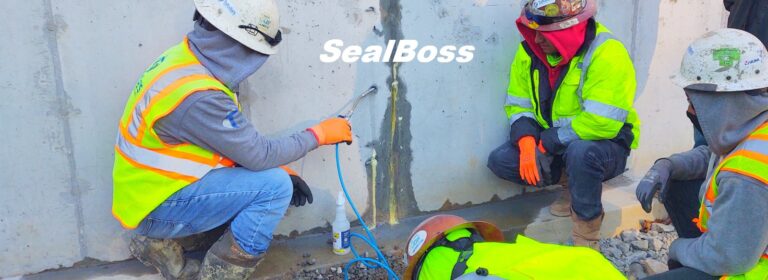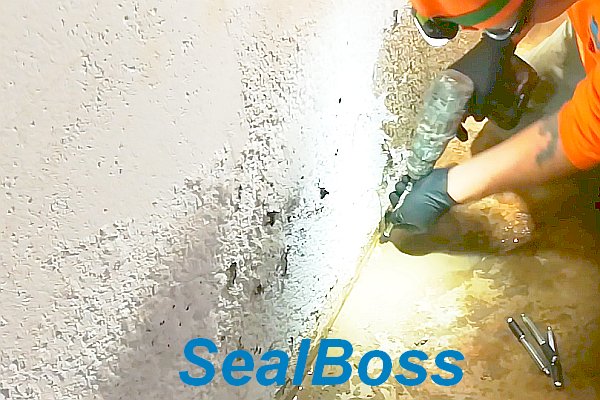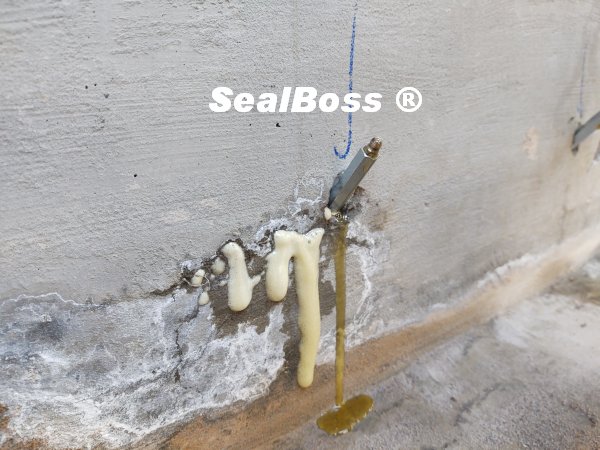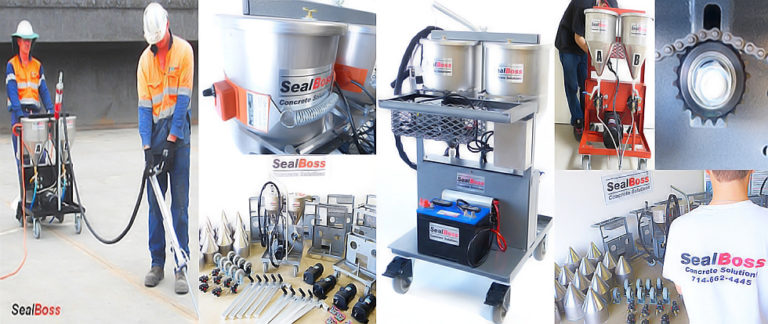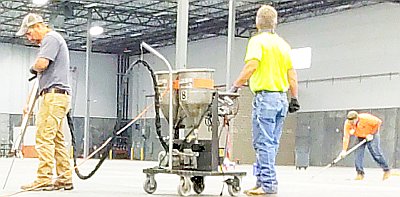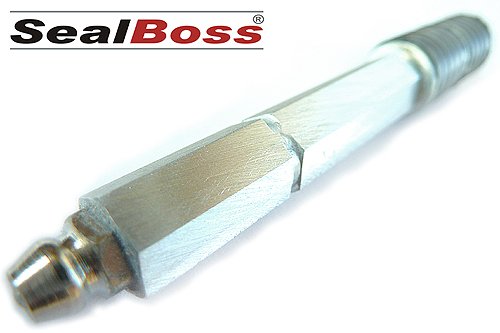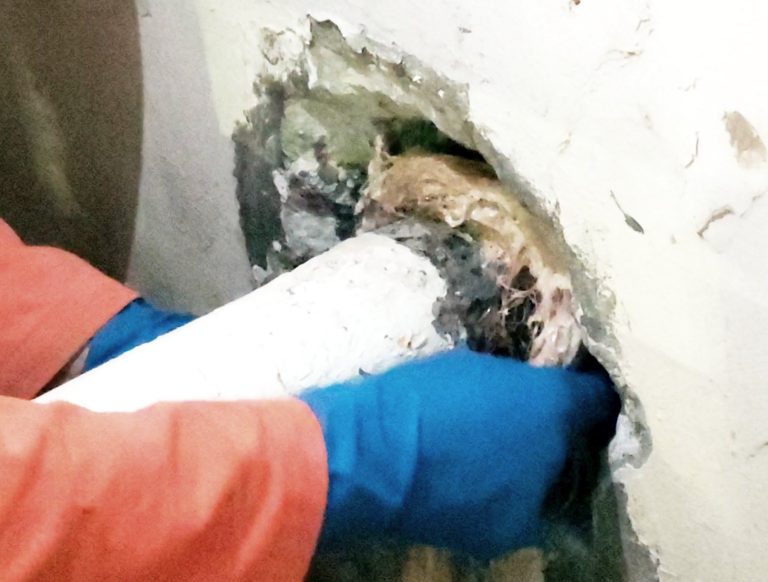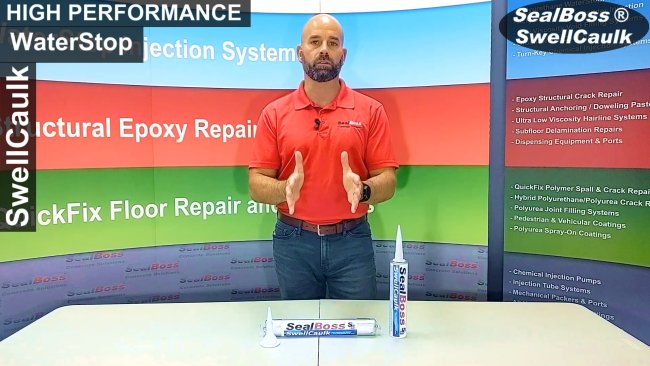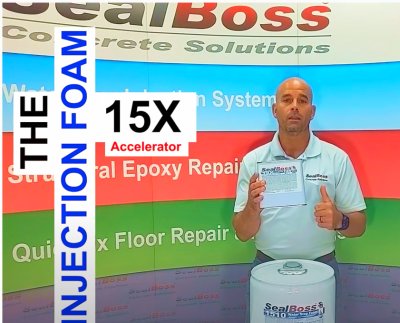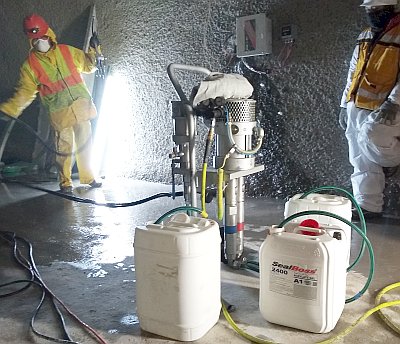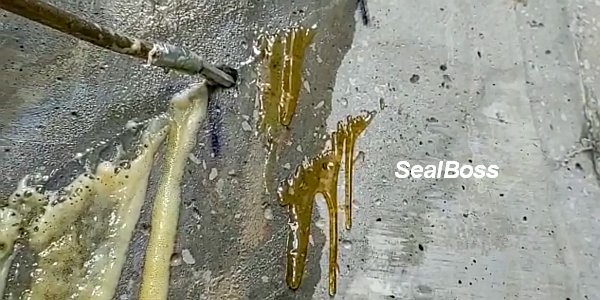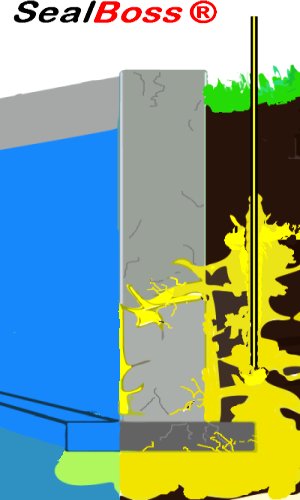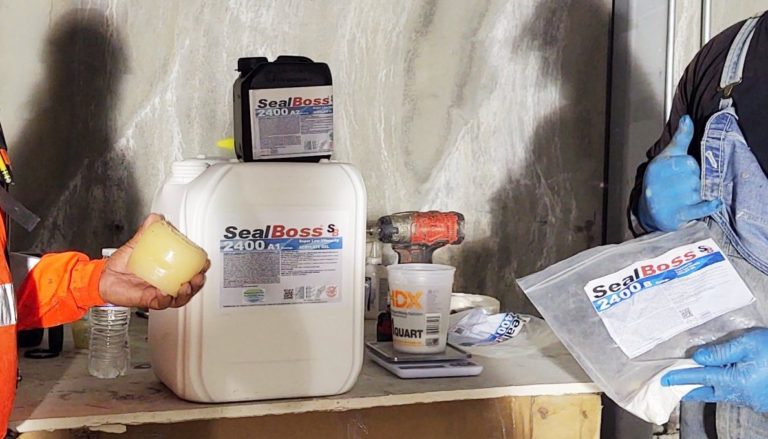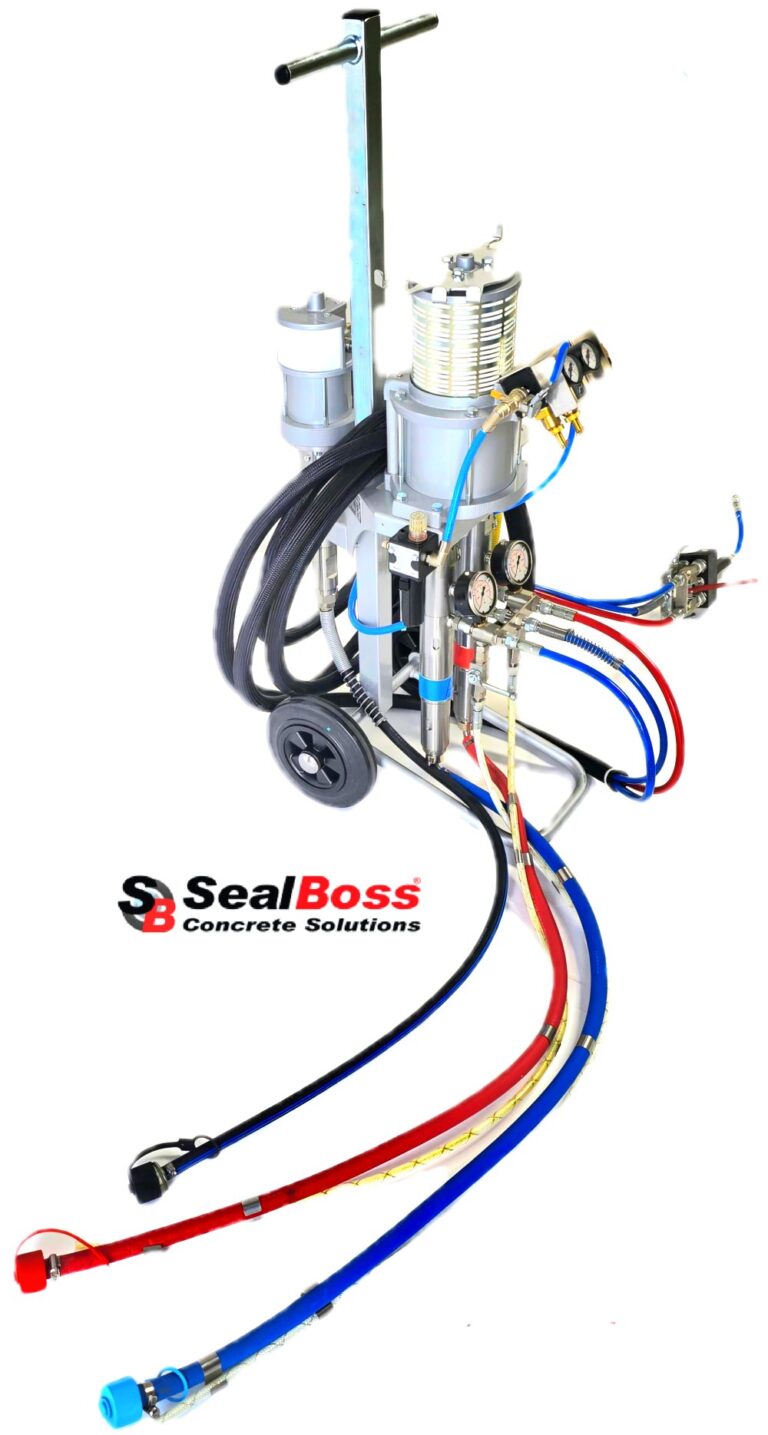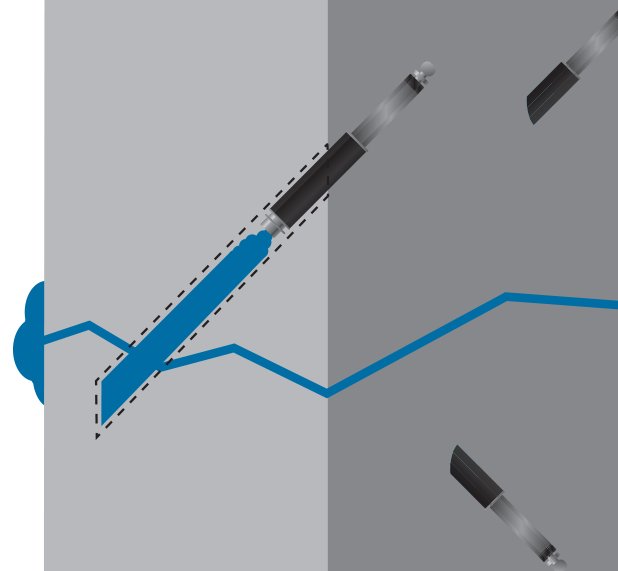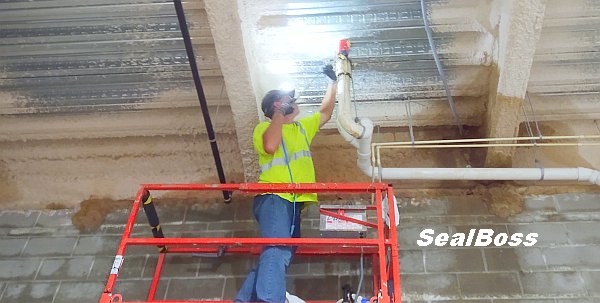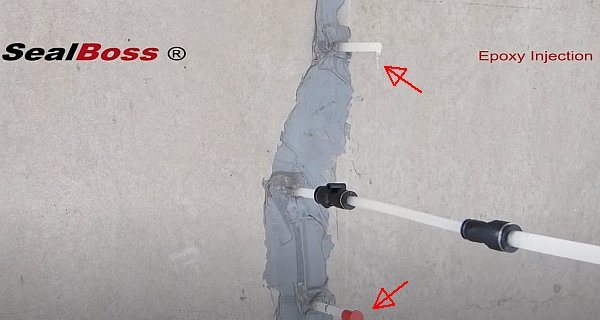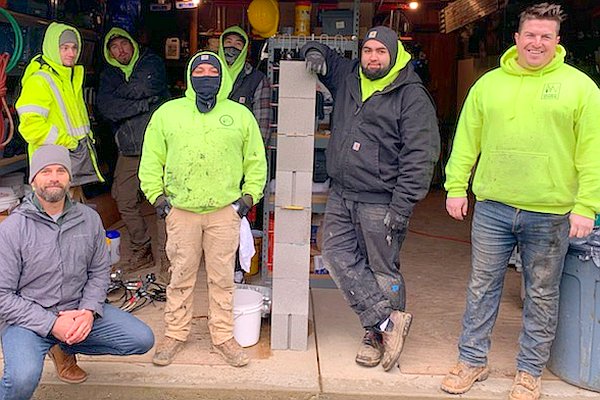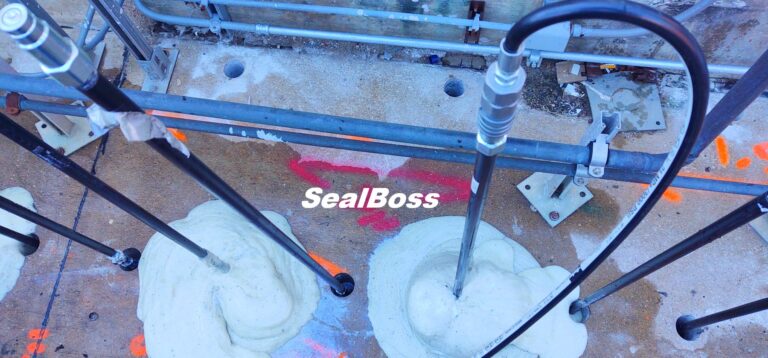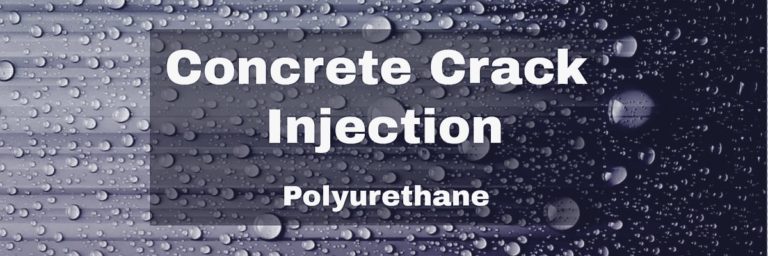Soil Consolidation & Waterproofing Injection
Soil Consolidation and Waterproofing Injection with Polyurethane Grout
Soil consolidation is a process often employed for soil injection treatment in mining and tunneling projects, but its applications extend beyond these large-scale soil treatment scenarios. One method for achieving soil consolidation, stabilization, and waterproofing involves the use of injectable polyurethane grouts.
Polyurethane grout injection is particularly useful in cases where water migration must be halted and soil shifting needs to be prevented. In this specific jobsite application, we demonstrate the process of using SB FlexGel, a hydrophilic polyurethane injection gel, along with steel injection needles to halt water ingress into a structure through pipe penetrations.
In this specific jobsite application, we demonstrate the process of using SB FlexGel, a hydrophilic polyurethane injection gel, along with steel injection needles to halt water ingress into a structure through pipe penetrations.
Upon injection, FlexGel is a low-viscosity liquid, allowing it to easily migrate through voids, fissures, and cavities in rock structures and loose ground. As it cures, it forms an impermeable bond that consolidates the soil, stabilizes the ground, and creates a watertight seal between the pipe, soil, and structure — This dual function addresses both the soil consolidation and waterproofing aspects of the repair.
As another option, hydrophobic polyurethane grouts and foam grouts can also be employed for this type of application, offering alternative solutions depending on the specific conditions and requirements of the project. These materials can effectively seal off leaks and reinforce the surrounding structure, ensuring long-lasting protection against water infiltration.
Polyurethane injection resins are known for their strong adhesion to rock and soil particulates, and they remain firm and rigid after the expansion process is complete. These properties make polyurethane-based injection products ideal for a wide range of soil waterproofing, consolidation, and stabilization needs.
In this application, Steel Injection Needles are used to deliver the polyurethane grout into the soil at predetermined depths. These needles serve a similar purpose to the more complex and sophisticated Grout Injection Lances often used in large-scale projects. By employing this technique, structures can be protected from water ingress, soil can be stabilized, and long-term durability can be ensured.
Polyurethane Gel Injection for Sealing Pipe Penetration Leaks at a Nebraska Natural Gas Plant
A natural gas plant in Nebraska, responsible for pumping methane gas, experienced persistent water intrusion through multiple pipe penetrations. Previous attempts to patch these leaks from the inside of the structure (negative side) proved unsuccessful. Additionally, water infiltration was observed at the floor-to-wall cold joint.
Soil Consolidation Repair Procedure
Given the easy exterior access to the affected areas, the proposed solution involved soil consolidation and waterproofing injection around the gas pipe from the outside of the structure.
This technique employed SealBoss FlexGel and steel injection needles or lances. It aimed to create a comprehensive solution by waterproofing the soil surrounding the pipe and sealing any water-bearing voids, cracks, and fissures within and around the structure where the pipe penetration occurred. The injection pressure facilitated a secure seal between the pipe and any annular gap between the pipe and the surrounding concrete.
Performing the repair from the exterior minimized further structural damage to the concrete, as it eliminated the need for drilling additional holes and grid patterns.
These steps are typically required when executing soil and curtain injections from the negative side (inside) of a structure.
SealBoss FlexGel LV is a NSF-certified, low-viscosity, single-component hydrophilic polyurethane gel injection rubber and chemical injection grout. It boasts excellent penetration properties, superior strength, and durability. FlexGel was selected for its low viscosity and slower gel time, which allows the resin to infiltrate the substrate and consolidate and waterproof the soil behind the structure and the area surrounding the gas pipe penetrations.
Although FlexGel can be diluted with up to a 10:1 water-to-resin ratio, it was injected “neat” (undiluted) for this application. Using FlexGel neat is a common and approved practice for smaller-scale projects, as it circumvents the need for complex and costly multi-component injection equipment. Instead, simple single-component injection pumps can be used.
The pipe penetrations were identified on the negative side, marked on the structure’s exterior, and used to determine the injection plan based on the penetration spacing. Large pipe penetrations required a minimum of three injection points for full coverage. For pipes up to 6 inches in diameter, one lance was driven directly above the pipe down to a predetermined depth, based on the location of the penetration.
Steel injection needles or lances were installed using a hammer drill and driven to the desired depth. After positioning the lance, the bolt used to drive it was removed, and the applicator with a valve was installed.
For enhanced control of the injection needle/lance, the contractor fastened two vice grip pliers to the top. This enabled them to easily raise and lower the lances to the desired position.
The SealBoss P2002 high-pressure injection pump was utilized to pump the material through the lances. The quantity of material used per lance was measured using the graduated hopper on the pump.
Each penetration was injected until material refusal was evident, either around the penetration or along the cold joint on the floor.
As the FlexGel reacted and expanded, it displaced air and water, causing bubbles to rise from the negative side of the structure. Throughout the injection process, the FlexGel polymer permeated the wall completely and cured. This demonstrated the effectiveness of the repair technique in sealing the pipe penetrations and mitigating water intrusion.
Quality Control
For leak detection and quality control purposes, the injection areas were flooded and saturated with water both before and after the injection repair. This was done to locate and confirm all leaks prior to the injection and to verify the successful sealing of the affected areas post-injection.
Should you have any questions about this soil consolidation waterproofing injection project or the materials used, please do not hesitate to contact us. We are here to assist in any way possible. Always remember to work safely by wearing eye protection and gloves when handling chemicals. We hope you found our review of the project outlined above informative and invite you to explore our website for a comprehensive range of waterproofing solutions for concrete structures.
Jobsite: Northern Natural Gas, Nebraska
Scope: Soil Consolidation Waterproofing Injection – Seal Pipe Penetrations
Materials Used: FlexGel
Additional Tools: Steel Injection Needle Lances, P2002 Injection Pump, Hammer Drill, Generator, PPEG





























